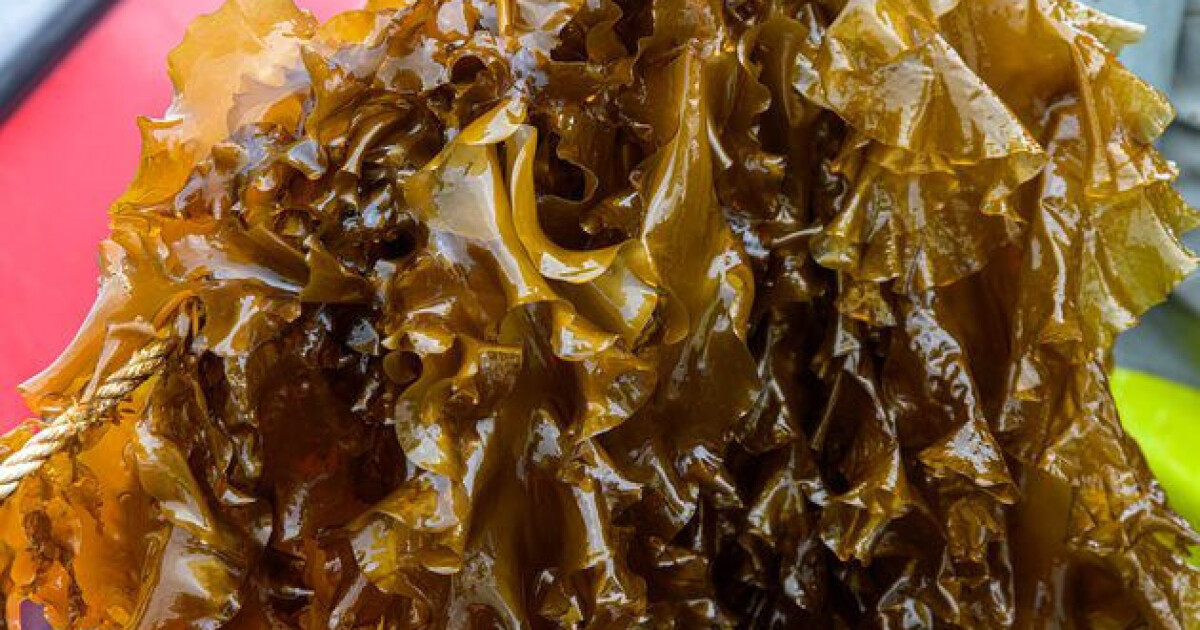What scientists know about iodine in algae

THIS ARTICLE/PRESS RELEASE IS PAID FOR AND PRESENTED BY Nofima The Norwegian Institute for Food, Fisheries and Aquaculture Research – Read more
Seaweed, especially brown seaweed, can contain a lot of iodine. But how much is absorbed by our body? And how much disappears when prepared as food?
Various studies have shown that brown algae like kelp contain a lot of iodine. While many of us are getting too little iodine, getting too much is not good either.
But how much iodine from algae is absorbed by our body? And how much is eliminated when heated?
“It’s been a long debate. We know that there is a wide variation in the proportion of iodine from brown algae that is absorbed by our bodies. It has been measured between 2 and 90%, depending on the method used and the species of algae,” explains Inger Aakre, researcher at the Institute for Marine Research (IMR).
Together with her research colleague Marthe Jordbrekk Blikra, from the Norwegian food research institute Nofima, she published an article which reviews all available international research on iodine in brown algae.
Much of the iodine is absorbed by our body
The amount of iodine that is absorbed by our body and reaches the systemic circulation is called its bioavailability.
The researchers found that results from studies involving humans and other animals varied widely, with bioavailability ranging from 31 to 90 percent. In species with relatively high iodine content, such as sweet kelp and kombu, bioavailability was medium to high. Tangle had high bioavailability.
“In other words, we cannot assume that bioavailability is low in high iodine species; on the contrary, our study suggests that the reverse is true,” says Aakre. “There has been a lot of discussion about the bioavailability and processing of iodine in brown algae. That’s why it’s useful to review and summarize the knowledge that already exists out there.”
article on the iodine content of kelp.” alt=”Scientists Marthe Jordbrekk Blikra (left), Nofima and Inger Aakre (right), IMR, authors of the review article on the iodine content of kelp.” src=”https://image.forskning.no/2075644.webp?imageId=2075644&x=0&y=0&cropw=100&croph=100&width=706&height=470″/>
Frying and boiling can remove some of the iodine
Studies that have looked at what happens when kelp is processed show that processing can reduce iodine content, but the amount depends on the species of kelp and the processing method used.
“For example, if you boil or blanch kelp, between 10 and 94 percent of the iodine is removed. The amount of water used affects the amount of iodine released from the kelp,” says food scientist Blikra. “The results are inconsistent, so we need more studies to find out why they vary so much. It will be important to find processing methods that allow producers to sell safe and predictable products. »
Certain species of seaweed and certain products can contain several thousand times more iodine than other types of food. It is especially brown algae, such as kelp, oarweed and kombu, that contain high levels of iodine.
Iodine comes in many forms
Iodine exists in various forms. For example, there may be differences between how inorganic iodine and organic iodine are absorbed by our bodies. Different species of algae can contain different chemical species of iodine, which in turn can affect how we absorb it.
But the researchers found few relevant studies on this topic.
“Here we found some knowledge gaps. This is an area that needs more research,” they say.
Despite the fact that many cultures have long traditions of using seaweed as food, there is still little documentation of what happens inside our bodies when we eat it.
The Norwegian Food Safety Authority, the European Food Safety Authority (EFSA) and the Norwegian Scientific Committee for Food and the Environment (VKM) have all called for more data on seaweed consumption and their iodine and heavy metal content. IMR researchers have begun a study that they hope will provide more answers about what happens when we eat seaweed.
At Nofima, researchers are investigating new, energy-efficient methods of iodine removal, including pulsed electric field (PEF) technology, and they are also testing new drying methods.
Reference:
Blikra et al. Iodine from brown algae in human nutrition, with emphasis on bioaccessibility, bioavailability, chemistry, and treatment effects: a systematic review, Comprehensive exams in food science and food safety, flight. 21 2022. DOI: 10.1111/1541-4337.12918